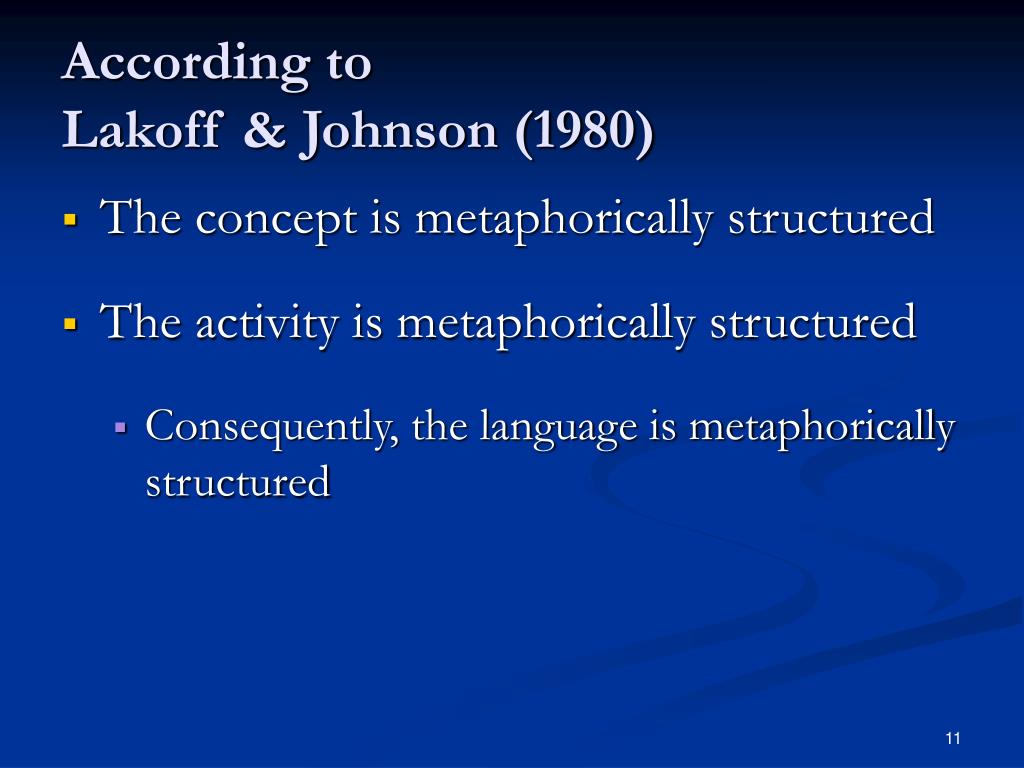

2004: Daniel Chandler, Semiotics: The Basics.1994: Jean Baudrillard, Simulacra and Simulation.1977: Roland Barthes, Elements of Semiology.Gulliver’s Travels by Jonathan Swift (1726).“Thirteen Ways of Looking at a Blackbird” by Wallace Stevens (1923).“The Yellow Wallpaper” by Charlotte Perkins Gilman (1892).The Lord of the Flies by William Golding (1954).The Adventures of Sherlock Holmes by Arthur Conan Doyle (1892).Alice’s Adventures in Wonderland and Through the Looking-Glass by Lewis Carroll (18).* This file is licensed under the Creative Commons Attribution ShareAlike 2.0 License. Philosophy In The Flesh: the Embodied Mind and its Challenge to Western Thought. Women, Fire, and Dangerous Things: What Categories Reveal About the Mind.

More Than Cool Reason: A Field Guide to Poetic Metaphor. For Lakoff the greater the level of abstraction the more layers of metaphor are required to express it. Non-metaphorical thought is for Lakoff only possible when we talk about purely physical reality.Metaphors are primarily a conceptual construction, and are central to the development of thought.Furthermore, he is particularly famous for his concept of the "embodied mind". However, he is most famous for his ideas about the centrality of metaphor to human thinking and society, as well as unorthodox views of the scientific process, and its central position in the culture of developed countries as an assumed neutral point of view. Some of his research involves questions traditionally pursued by linguists, such as the conditions under which a certain linguistic construction is grammatically viable. Lakoff is a professor of cognitive linguistics at the University of California, Berkeley where he has taught since 1972. the centrality of metaphor to human thinking, political behavior and society.


 0 kommentar(er)
0 kommentar(er)
